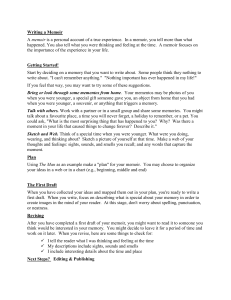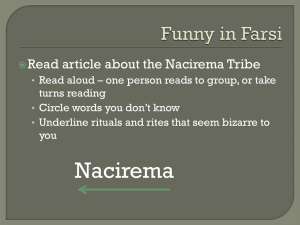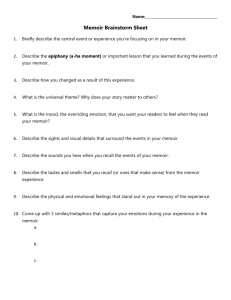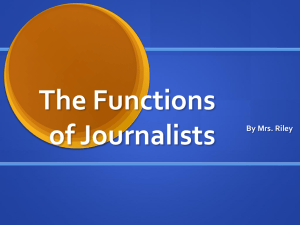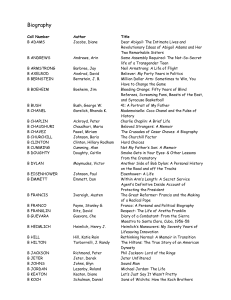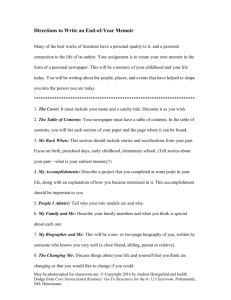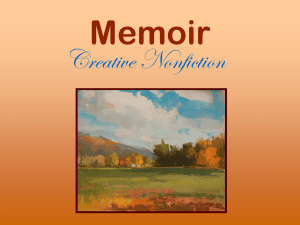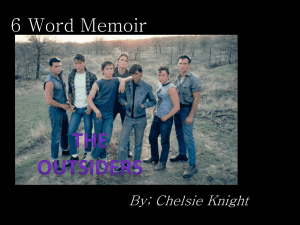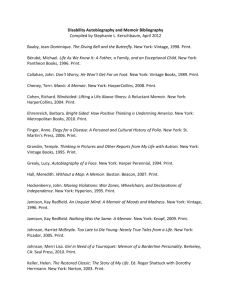Women, War and Memoir - Journalism and Women Symposium
advertisement
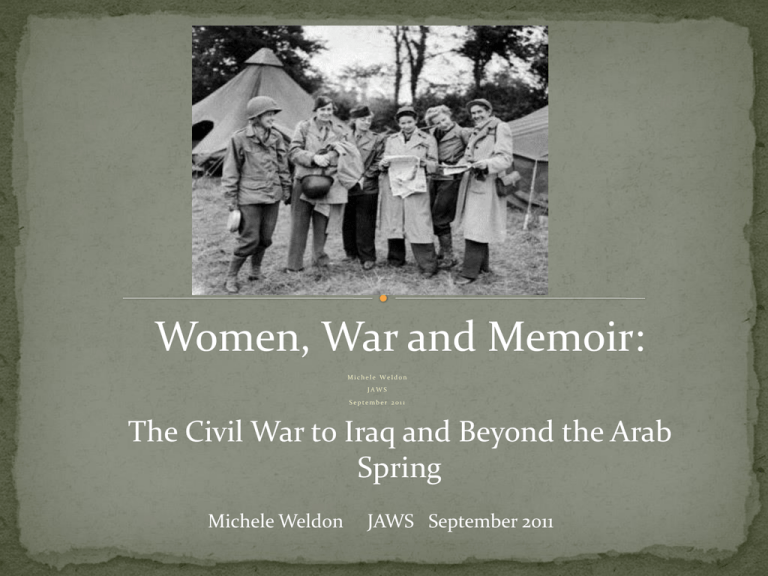
Women, War and Memoir: Michele Weldon JAWS September 2011 The Civil War to Iraq and Beyond the Arab Spring Michele Weldon JAWS September 2011 http://vodpod.com/watch/557669-women-war- journalists Reason to write memoir: Reason to read memoir: 1. 1. 2. 3. 4. 5. Juicy revelations Inform others as witness Journal of historical chronology Healing and cathartic Personal transformation 2. 3. 4. 5. Train wreck Learn, discover Fill in historical blanks Empathy for writer The personal becomes universal http://www.niemanstoryboard.org/2011/07/28/yagodamemoir-truth-charts-delorenzo/ Is the war central to the story? Susie King Taylor: a nurse to black soldiers in Civil War • “Topsy Turvy world” emancipated, liberated Victorian Era • • • • • • • women Worked outside the home for the first time Red Cross nurses, munition workers, dispatch riders Stories were about the absence of men, “No Man’s Land” Emergence of lesbian and feminist literature: Gertrude Stein Defined by their remote reflections on war Sexualization and freedom of women at home, later reunited with disabled and disfigured partners Contemporaries: Emily Dickinson, Charlotte Perkins Gilman, Edith Wharton, Willa Cather, May Sinclair, Virginia Woolfe, Katherine Anne Porter, Katherine Mansfield Martha Gelhorn, Dorothy Thompson, Lee Miller , Margaret Bourke White, Claire Booth Luce, Dickey Chappelle, Sigrid Schultz, Ann Stringer What did the women journalists bring to the stories? Women journalists approached the stories differently, more featurized, more anecdotal, “softer,” more humanistic Still so unusual for women to be in this role Still a war with familiar western civilization, language but not extreme cultural barriers JAWdesses Tad Bartimus, Edie Lederer: fighting newsrooms for news Memoirs are not just about the work, but also encompass daily lives and what is missed at home Deborah Copaken Kogan A clash of: cultures, language, religion, customs, gender suppression and violence : Women are the enemy and are in danger http://latimesblogs.latimes.com/showtracker/2011/05/lara-logan-breaks-her- silence-on-60-minutes-.html • Compelling writing • Original style • Fresh outlook • New information • Personal transformation • Timeless • The author as heroine • Characters we can know, empathize with or despise Don’t tell everything, but tell enough. Be specific. Change the aperture. Make the reader feel as if he/she is there Create scenes Offer revelations The setting as a character Internal dialogue without rants A solid narrative arc • • • • • • • • Shutterbabe: Adventures in Love and War by Deborah Copaken Kogan Flirting with Danger: Confessions of a Reluctant War Reporter by Siobhan Darrow Chienne de Guerre: A Woman Reporter Behind The Lines by Anne Nivat The BangBang Club Naked in Baghdad by Anne Garrels Rule Number Two: Lessons I Learned in Combat Hospital by Heidi Squier Kraft Sister in the band of Brothers: Embedded with the 101st Airborne in Iraq by Katherine Skiba Ghosts by Daylight :Love, War and Redemption by Janine Di Giovanni • On Their Own: Women Journalists and the American • • • • • • Experience in VietNam by Joyce Hoffman War Torn: Stories of War from Women Reporters by Tad Bartimus War, Women and the News by Catherine Gourley The Women Who Wrote The War by Nancy Caldwell Sorel The Face of War by Martha Gelhorn Where The Action Was: Women War Correspondents by Penny Coleman Outlaw Woman: A Memoir of the War Years by Roxanne Dunbar-Ortiz Stories from women in combat written BY women in combat Now that more women war correspondents now working independently and for MSM outlets, less of an anomaly Honest accounts of what it is like and what it means in the broader context Move past sensationalism into what is real
